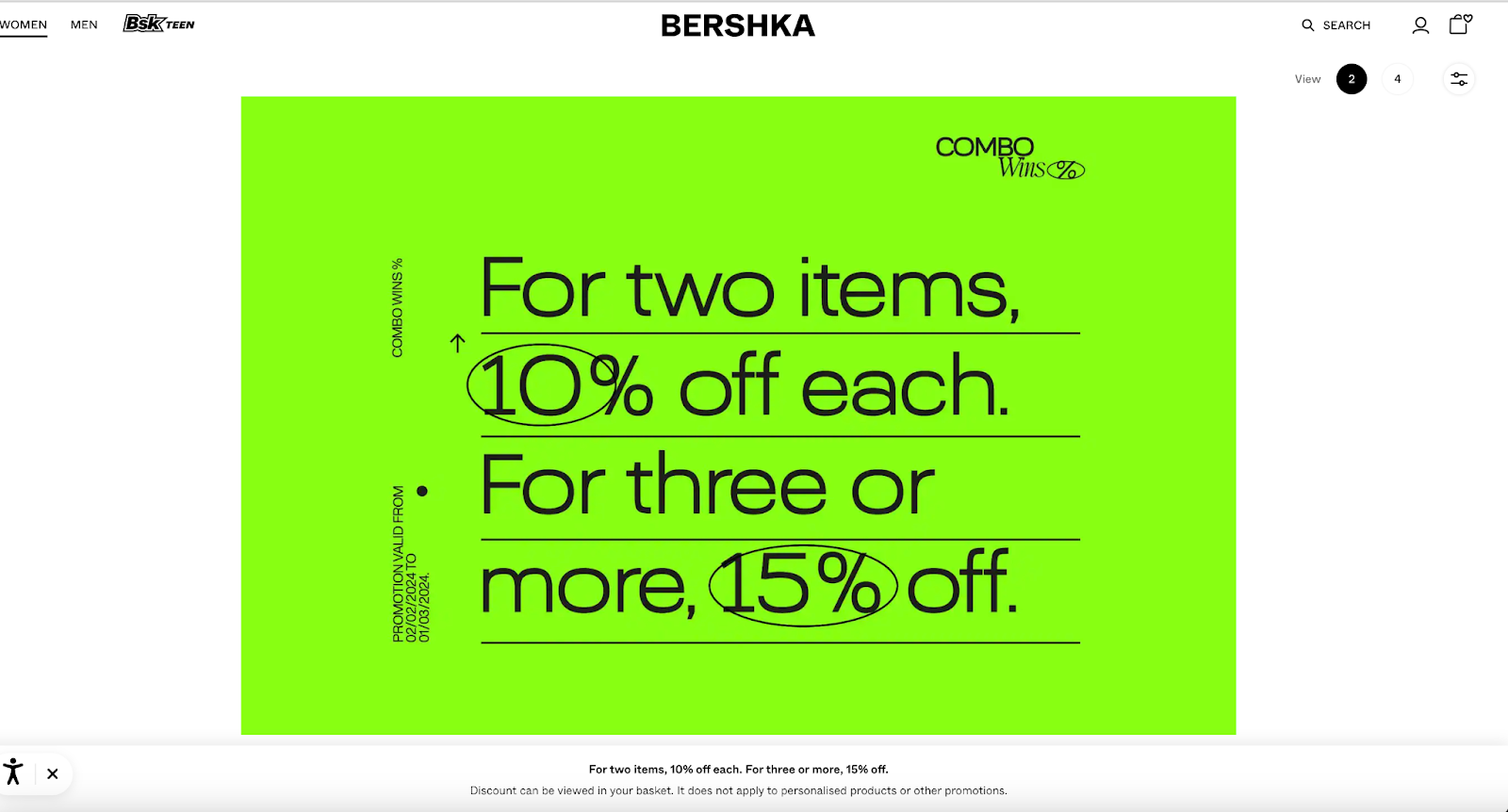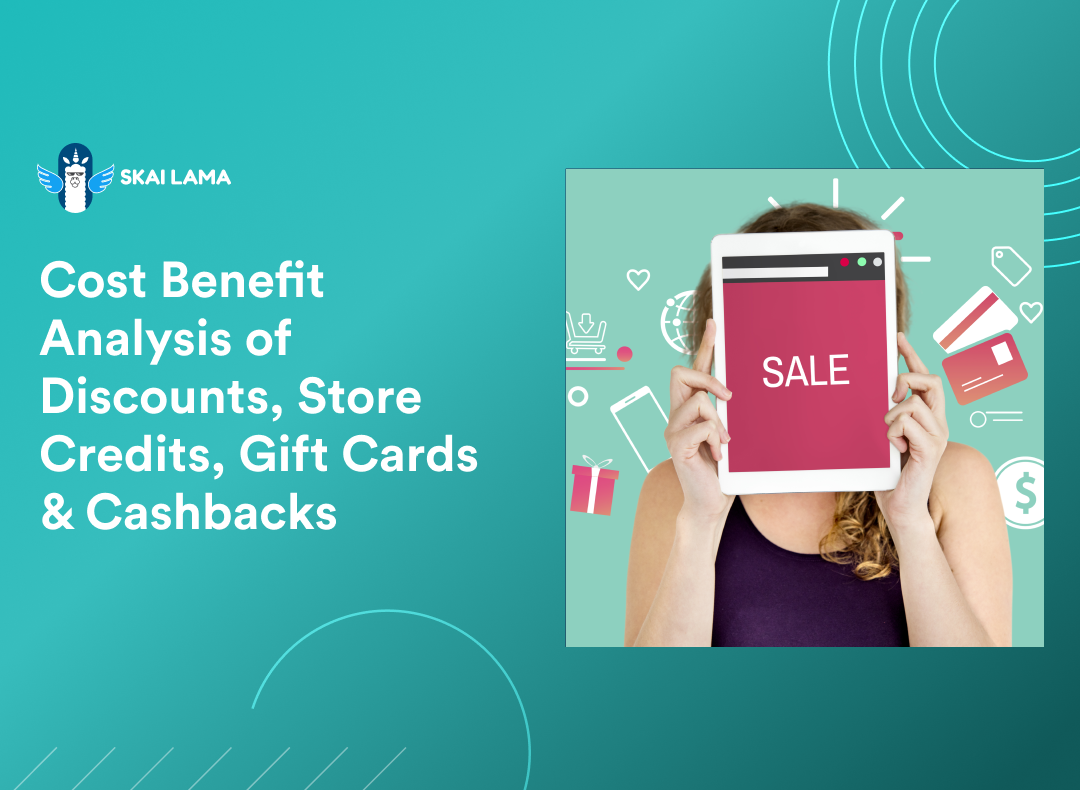In 2024, if there’s one person to learn business from, it’s definitely Taylor Swift.
While Taylor may not be directly involved in e-commerce, merchants can learn from her success in building a strong brand, fostering customer loyalty, and achieving higher revenue and profits.
Her recent Black Friday sale is a great example of leveraging tiered discount deals that encourage customers to buy more to get higher discounts while simultaneously boosting the store’s average order value (AOV).
Tiered pricing creates a win-win scenario, providing customers with savings and value while boosting your revenue and encouraging larger transactions.

What are Tiered Discounts?
Tiered discount is a strategy where merchants offer varying levels of discounts based on the number of products purchased. The more products they buy, the more discount they receive. The gradual progression of discounts creates a sense of achievement and entices customers to maximize their savings.
Here’s what a tiered discount structure might look like:
- Tier 1 (Base Price): Buy up to a certain amount, and pay the regular base price without any discount.
- Tier 2 (Moderate Discount): Exceed Tier 1 amount, and avail a moderate discount on the entire order.
- Tier 3 (Higher Discount): Go beyond the threshold for Tier 2, qualify for Tier 3, and get a higher discount on the entire order.
- Tier 4 (Maximum Discount): Hit the highest purchase value, and qualify for the maximum discount in Tier 4. This is the most significant discount, ideal for bulk buying.

H&M's tiered discounts are like a shopping game. Spend a bit extra, and unlock more savings. It's simple, exciting, and keeps the buyers filling up their carts.
The concept of tiered discounts is deceptively simple yet powerfully effective.
Buyers avail of a higher percentage discount and enjoy cost savings when they buy more items, while sellers increase their average order value and sales. This strategic approach operates on the psychological principle of progressive reward, tapping into the inherent desire for savings and the satisfaction derived from achieving a goal.
These higher sales don't just mean more money for you though; it means customers stick around. They like the good deals, and they keep coming back for more. And this is no hunch; studies show that customers love receiving discounts. So much so that they don’t mind spending more when they see potential savings.
Benefits of the Tiered Discount Model
Encourages Higher Spending: The tiered pricing model encourages buyers to up their spending to reach higher discount tiers. Customers, then, are motivated to explore more products to maximize their savings, contributing to increased revenue for the business.
Increased Average Order Value: Stores employing tiered pricing witness a rise in the average order value. The structure motivates customers to add more items to their cart, reaching higher discount thresholds and elevating the overall transaction value. This not only enhances the business's revenue but aligns with customers seeking greater savings through larger purchases.
Boosts Customer Loyalty and Retention: By offering tiered discounts, businesses can foster customer loyalty. As customers move up the price tiers, they feel a sense of accomplishment and exclusivity, which can lead to repeat business. This loyalty can result in long-term customer relationships and increased customer retention rates.
Promotes Upselling and Cross-Selling: Businesses can strategically design tiers to promote upselling and cross-selling. Offering a higher discount for a larger order encourages customers to explore additional products or upgrade to premium versions.
Flexible: The tiered pricing model allows for flexibility in pricing strategies. Stores can tailor their discount tiers based on product categories, customer segments, or specific promotions. It allows stores to adjust the thresholds, percentages, and criteria to align with specific objectives or seasonal trends.
How to Set Up a Successful Tiered Discount Campaign?
At its core, a tiered discount deal is nothing short of a treasure map, guiding buyers through different levels of savings based on their order count. However, setting up a successful tiered discount campaign can be challenging. It requires careful planning, understanding your audience, and ongoing optimization. We’ve put together a step-by-step guide to help you set up your first tiered discount campaign:
Step 1: Understand Your Customer Segments
Understanding customer segments is crucial for tailoring your products, services, and marketing efforts to meet the specific needs of different groups of customers. Look out for these key elements when analyzing customer segments:
- Demographics
- Behavioral Factors
- Technographic and Digital Behavior
- Preferences and Pain Points
- Purchase Motivations
- Buying Journey
- Customer Lifecycle
Step 2: Analyze Customer Value
Assess the value that each customer segment brings to your business. It goes beyond looking at the revenue generated by each customer and considers factors such as loyalty, lifetime value, and overall contribution to your business success.
Step 3: Choose the Right Products
Select the products you want to include in your tiered discount campaign. Consider featuring high-margin items, slow-moving inventory, or products that complement each other. This step helps maximize the impact of your discounts on your overall revenue.

Victoria’s Secret cleverly offers tiered discounts on its curated selection of mists and lotions, aiming to make room for its upcoming new collection by clearing out the existing inventory.
Step 4: Set Clear Tiers
Set different discount levels for each tier. The discounts can be percentage-based, fixed amounts, or a combination of both. Mention different spending tiers and corresponding discounts. For example:
- a basic tier could offer a 10% discount for purchases above $50,
- a mid-tier could provide a 15% discount for orders exceeding $100,
- and a premium tier might give a 20% discount for purchases over $150.
Pro-tip: Strategically time the release of deals, considering peak buying periods or new product launches, to maximize their impact and effectiveness.
Step 5: Communicate Clearly
Clearly display the discount pricing tiers on your website, marketing materials, and during the checkout process:
- Use enticing language to highlight the benefits of reaching higher tiers.
- Highlight the value buyers will receive and create a sense of urgency to drive conversions.
- Make sure your communication is consistent across all channels—website, emails, and social media.

Bershka features its tiered pricing offers on the homepage with clear and concise messaging
Pro-tip: Employ the tiered discounts across multiple customer touchpoints to maximize visibility and conversions:
- Show different discount options right where customers look at products to get their attention.
- Offer extra savings when customers buy a combination of products together, making the shopping experience better and encouraging more purchases.
Step 6: Leverage Behavioral Triggers
Personalize your tiered discounts to increase the likelihood of higher spending. For instance, send targeted emails to customers who abandoned their carts, nudging them with a special discount if they complete their purchase. Use data to identify behaviors that align with your goals and trigger the right offers at the right time.
Step 7: Promote the Deals Effectively
Actively market your tiered discount deals through various channels like social media, emails, and your website:
- Use fun visuals and clear messaging to communicate the value of each tier.
- Use time-limited promotions to trigger FOMO. It can drive customers to make purchasing decisions quickly, increasing the chances of them reaching higher spending tiers.
- Regularly communicate the benefits to keep your audience informed and entice them to take advantage of the tiered discounts.
Step 8: Optimize Checkout Experience
Ensure that the checkout process is smooth and user-friendly. Display the current discount tier and potential savings, making it easy for customers to understand the benefits of increasing their order value. Consider offering a progress bar to show customers how close they are to unlocking the next discount.
Conclusion: Leveraging Tiered Discount Strategies for eCommerce Success
When it comes to e-commerce success, every business aims for that sweet spot – higher revenue and better profits. If you're eyeing more revenue and better profits, put your focus on cranking up the average order value (AOV) using tiered pricing strategies. Forget the constant hustle for new website clicks – leverage the customers you've already got.


.webp)







.webp)




.png)






